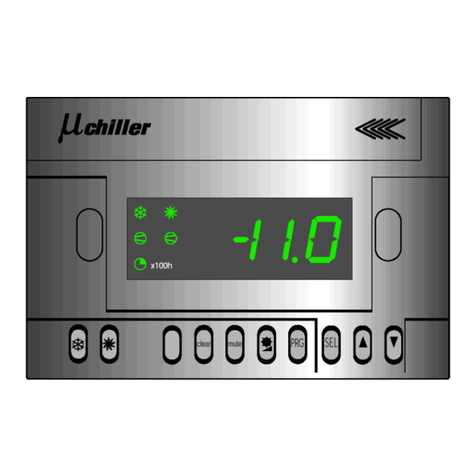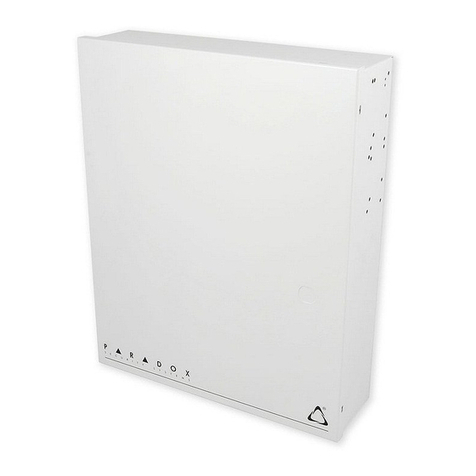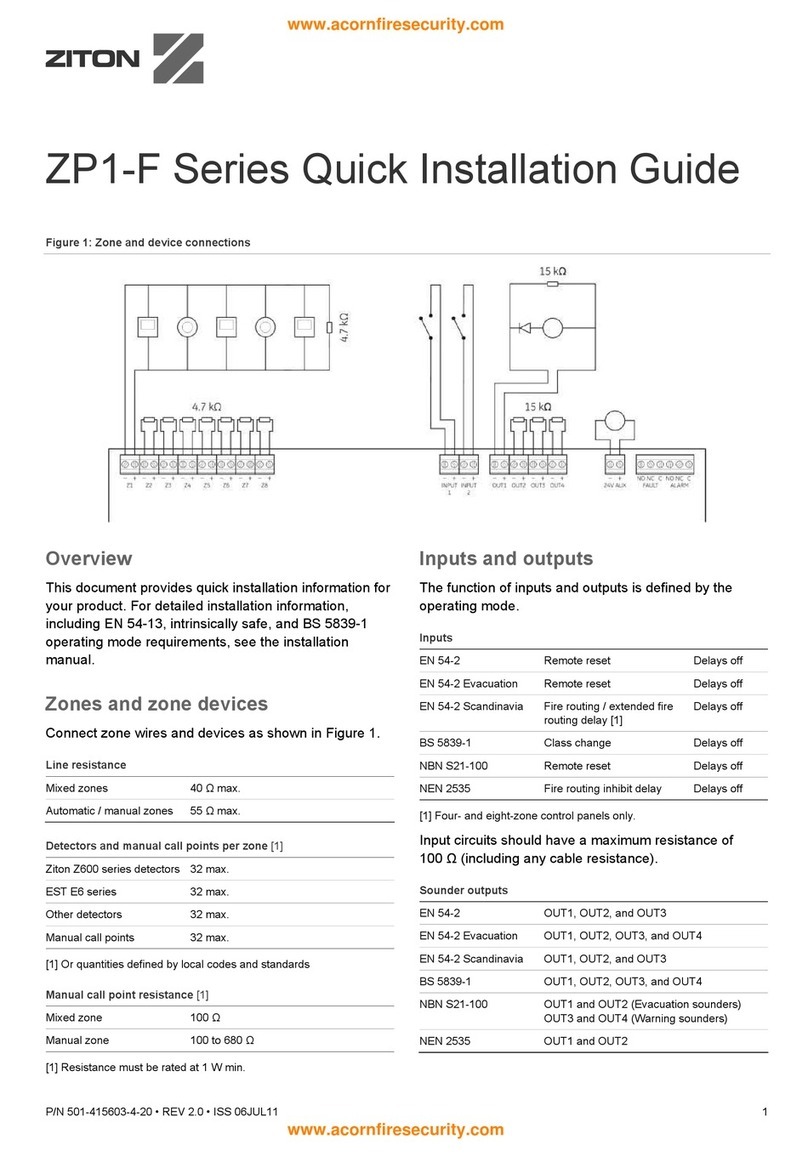Ropam elektronik NeoGSM-IP User manual

NeoGSM-IP Control panel with GSM / IP
communication.
Ropam Elektronik
Tel. +48 12 272 39 71
Faks +48 12 379 34 10
Polanka 301
32-400 Myślenice, Polska
www.ropam.com.pl
biuro@ropam.com.pl
Document version : 1.0
2018-04-01
Installation Guide (DTR).

© 2018 Ropam Elektronik
WARNINGS
For safety reasons, the device should only be installed by qualified specialists.
Before starting the assembly, read the instructions above, the connection operations
should be carried out without the power supply connected.
Do not turn on the power of the device without an external antenna connected (starting
the device without the antenna connected may damage the transmitting circuits of the
phone and void the warranty!).
Do not interfere with the construction or carry out independent repairs.
Protect the electronics against electrostatic discharge.
In order to meet the requirements of LVD and EMC, the followingrules must be observed:
power supply, installation, shielding - according to the application. The device is a source
of electromagnetic waves, so in specific configurations it can interfere with other radio
devices).
The Ropam Elektronik company is not responsible for the malfunctioning of the GSM
network and the consequences of possible technical problems.
WEEE LABELING
Waste electrical and electronic equipment must not be disposed of with normal
household waste. According to the WEEE directive (Directive 2002/96 / EC) applicable
in the EU for the used electrical and electronic equipment, separate disposal methods
should be used. In Poland, in accordance with the provisions on waste electrical and
electronic equipment, it is forbidden to put waste equipment together with other waste
marked with the symbol of a crossed out basket. The user who intends to get rid of this
product is obliged to hand over the above-mentioned to the point of collecting used
equipment. Collection points are carried out, among others by wholesalers and retailers
of this equipment and communal organizational units conducting business in the field of
waste collection. Proper implementation of these duties is important especially when
there are hazardous components in the used equipment that have a negative impact on
the environment and human health.
The control panel power supply cooperates with a 12V DC lead-acid dry battery (SLA,
VRL). After the period of use, it should not be disposed of, but disposed of in a manner
consistent with applicable regulations.
(Directives of the European Union 91/157 / EEC and 93/86 / EEC).
0

© 2018 Ropam Elektronik
Table of Contents
1. General description. .................................................................................................................... 1
Properties........................................................................................................................................ 1
Appliance. ....................................................................................................................................... 1
Warnings......................................................................................................................................... 2
Requirements for SMS, DTMF control............................................................................................ 3
2. System description...................................................................................................................... 4
Device description........................................................................................................................... 4
Device version............................................................................................................................. 4
Description of connectors and components................................................................................ 5
Optical signalling of the state. ..................................................................................................... 7
3. Installation and commissioning. ................................................................................................ 10
Basic requirements. ...................................................................................................................... 10
System cabling.............................................................................................................................. 10
Connection of the RopamNET bus............................................................................................... 11
Connecting devices to inputs........................................................................................................ 13
Connection of devices to outputs.................................................................................................. 14
Connecting the signal to the AI input............................................................................................ 16
Connection of temperature sensors.............................................................................................. 17
Connection of a speech synthesizer, audio module..................................................................... 17
Connecting the power supply to the control panel........................................................................ 18
Installation and start-up procedure. .............................................................................................. 20
The reset procedure of the control panel to the factory settings. ................................................. 21
4. System configuration................................................................................................................. 22
System configuration: NeoGSMIPManager.................................................................................. 22
Description of the program toolbar............................................................................................ 22
Local configuration via micro USB port..................................................................................... 22
Local TCP / IP configuration (GPRS)........................................................................................ 23
Remote configuration TCP / IP / GPRS.................................................................................... 24
Firmware upgrade. .................................................................................................................... 26
Update methods. ................................................................................................................... 26
5. Additional modules and extensions........................................................................................... 30
EXP-LAN................................................................................................................................... 30
Connection of the EXP-LAN module. .................................................................................... 30

© 2018 Ropam Elektronik
TPR-4........................................................................................................................................ 31
General description................................................................................................................ 31
Properties........................................................................................................................... 31
Appliance. .......................................................................................................................... 31
Warrnings........................................................................................................................... 31
Description of the touch panel............................................................................................... 32
Construction of the TPR-4 touch panel.............................................................................. 32
Description of connectors and elements........................................................................ 32
View and dimensioning of the panel............................................................................... 33
Installation and commissioning.............................................................................................. 34
Basic requirements. ........................................................................................................... 34
System cabling................................................................................................................... 34
Panel connection................................................................................................................ 36
Installation and start-up procedure TPR-4......................................................................... 36
Configuration of TPR-4 touch panels. ................................................................................... 37
TPR-4 configuration: user menu........................................................................................ 37
Set the clock................................................................................................................... 38
Relay time....................................................................................................................... 38
Turn on Gong. ................................................................................................................ 38
Reading an SMS. ........................................................................................................... 38
Brightness of the screensaver........................................................................................ 38
Service access. .............................................................................................................. 39
Thermostats.................................................................................................................... 39
Room thermostats.......................................................................................................... 40
USSD codes, test SMS.................................................................................................. 43
Introduction of the USSD code. .................................................................................. 44
Send the USSD code to the GSM network................................................................. 44
Send a test SMS......................................................................................................... 44
Timers 1-4. ..................................................................................................................... 44
Internet module............................................................................................................... 45
Show network status................................................................................................... 46
SSID:........................................................................................................................... 46
WPA:........................................................................................................................... 46
Module restart............................................................................................................. 46
QR-code...................................................................................................................... 47

© 2018 Ropam Elektronik
Remote programming..................................................................................................... 47
Screen cleaning.............................................................................................................. 47
TPR-4 configuration: service menu.................................................................................... 47
Settings........................................................................................................................... 48
TPR-4 configuration: NeoGSM-IPManager. ...................................................................... 48
Tab: touch panel / settings............................................................................................. 50
Tab: touch panel / other settings.................................................................................... 51
Tab: Editing screens....................................................................................................... 51
Description and functions of icons.................................................................................. 53
Firmware update.................................................................................................................... 58
TPR-4 software update procedure. ....................................................................................... 58
TPR-4 panel maintenance..................................................................................................... 59
Technical parameters TPR-4................................................................................................. 59
EXP-I8-RN................................................................................................................................. 60
General description................................................................................................................ 60
Properties........................................................................................................................... 60
Destiny. .............................................................................................................................. 60
Warnings............................................................................................................................ 60
Module decription. ................................................................................................................. 60
Module versions................................................................................................................. 60
Construction and description. ............................................................................................ 61
Optical signaling of the state.............................................................................................. 62
Requirements, installation. .................................................................................................... 62
Basic requirements. ........................................................................................................... 62
Installation and connection of the module.......................................................................... 62
Technical parameters............................................................................................................ 63
EXP-O8T-RN............................................................................................................................. 64
General description................................................................................................................ 64
Properties........................................................................................................................... 64
Destiny. .............................................................................................................................. 64
Warnings............................................................................................................................ 64
Module description................................................................................................................. 65
Module version................................................................................................................... 65
Construction and description. ............................................................................................ 65
Optical signaling of the state.............................................................................................. 66

© 2018 Ropam Elektronik
Requirements, installation. .................................................................................................... 67
Basic requirements. ........................................................................................................... 67
Installation and connection of the module.......................................................................... 67
System maintenance. ............................................................................................................ 67
Technical parameters............................................................................................................ 68
EXP-O8R-RN ............................................................................................................................ 68
General Description............................................................................................................... 68
Properties........................................................................................................................... 68
Destiny. .............................................................................................................................. 68
Warnings............................................................................................................................ 68
Module description................................................................................................................. 69
Module version................................................................................................................... 69
Construction and description. ............................................................................................ 69
Optical signaling of the state.............................................................................................. 70
Requirements, installation.................................................................................................. 70
Basic requirements. ........................................................................................................... 70
Installation and connection of the module.......................................................................... 71
System maintenance. ............................................................................................................ 71
Technical parameters............................................................................................................ 71
APm-Aero.................................................................................................................................. 72
General description................................................................................................................ 72
Properties........................................................................................................................... 72
Destiny. .............................................................................................................................. 72
Warnings............................................................................................................................ 72
Controller description............................................................................................................. 73
Controller versions. ............................................................................................................ 73
Construction and description. ............................................................................................ 73
Assembly and installation...................................................................................................... 73
Basic requirements. ........................................................................................................... 73
Installing the controller....................................................................................................... 74
Configuration. ........................................................................................................................ 74
Configuration: NeoGSMIPManager. .................................................................................. 74
NeoGSMIPManager: AP-Aero. ...................................................................................... 74
Technical parameters............................................................................................................ 77
Keyfob-Aero .............................................................................................................................. 78

© 2018 Ropam Elektronik
General descriptiom............................................................................................................... 78
Properties........................................................................................................................... 78
Destiny. .............................................................................................................................. 78
Warnings............................................................................................................................ 78
Remote control description.................................................................................................... 78
Remote control versions. ................................................................................................... 78
Construction and description. ............................................................................................ 79
Requirements, installation. .................................................................................................... 79
Basic requirements. ........................................................................................................... 79
Configuration. ........................................................................................................................ 80
Preparing the system for work. .......................................................................................... 80
Configuration: NeoGSMIPManager. .................................................................................. 81
NeoGSMIPManager: AP-Aero. ...................................................................................... 81
Flags for the pilot in LogicProcessor.............................................................................. 83
Technical parameters............................................................................................................ 84
IO-Aero...................................................................................................................................... 84
General description................................................................................................................ 84
Properties........................................................................................................................... 84
Destiny. .............................................................................................................................. 84
It allows you to extend the functionality of the system with wireless devices in the absence
of wired resources (cabling)............................................................................................... 85
Warnings............................................................................................................................ 85
Module descriptionm.............................................................................................................. 85
Versions of the IO-Aero module......................................................................................... 85
Construction and description. ............................................................................................ 85
Assembly and installation...................................................................................................... 86
Basic requirements. ........................................................................................................... 86
Description and operation of IO-Aero module. ................................................................. 86
Installation and programming of the IO module................................................................. 87
Reset procedure for lips factory......................................................................................... 88
Configuration. ........................................................................................................................ 88
Configuration: NeoGSMIPManager. .................................................................................. 88
NeoGSMIPManager: AP-Aero. ...................................................................................... 88
System maintenance. ............................................................................................................ 90
Technical parameters............................................................................................................ 90

© 2018 Ropam Elektronik
RHT-Aero .................................................................................................................................. 91
General description................................................................................................................ 91
Properties........................................................................................................................... 91
Destiny. .............................................................................................................................. 91
Warnings............................................................................................................................ 91
Module description................................................................................................................. 92
Module version................................................................................................................... 92
Construction and description. ............................................................................................ 93
Assembly and installation...................................................................................................... 94
Basic requirements. ........................................................................................................... 94
Description and operation of the RHT-Aero module.......................................................... 94
Installation and programming of the RHT-Aero module. ................................................... 94
RHT-Aero flags in LogicProcessor..................................................................................... 95
Configuration. ........................................................................................................................ 96
Preparing the system for work. .......................................................................................... 96
Power connection / ext. sensor for the module.................................................................. 96
Configuration: NeoGSMIPManager. .................................................................................. 96
NeoGSMIPManager: Apx-Aero –sensor temp./hum..................................................... 96
Value display settings on the TPR-4 panel.................................................................... 97
System maintenance. ............................................................................................................ 97
Technical parameters............................................................................................................ 98
VAR-1U ..................................................................................................................................... 98
General description................................................................................................................ 98
Properties........................................................................................................................... 98
Destiny. .............................................................................................................................. 99
Warnings............................................................................................................................ 99
Module description................................................................................................................. 99
Construction and description. ............................................................................................ 99
Module versions............................................................................................................... 100
Requirements, installation. .................................................................................................. 100
Basic requirements. ......................................................................................................... 100
Installation............................................................................................................................ 100
Preparing the system for work. ........................................................................................ 100
Connecting the module to the control panel. ................................................................... 101
List of devices cooperating with the module.................................................................... 101

© 2018 Ropam Elektronik
Connection of intercoms to VAR-1U................................................................................ 102
Configuration.................................................................................................................... 105
NeoGSMIPManager: VAR-1U...................................................................................... 105
Changing the parameters of the module...................................................................... 107
Custom settings............................................................................................................ 107
Notifications from the VAR-1U module......................................................................... 108
Bolt control using DTMF............................................................................................... 108
Attaching transom..................................................................................................... 108
System maintance. .............................................................................................................. 109
Technical parameters.......................................................................................................... 109
5. System operation. ................................................................................................................... 110
Basic SMS commands................................................................................................................ 110
Basic DTMF commands.............................................................................................................. 112
RopamNeo application................................................................................................................ 113
System demo. ......................................................................................................................... 113
6. NeoGSMIPManager................................................................................................................ 115
Functional description................................................................................................................. 115
Tab: SIM card settings......................................................................................................... 115
Options SIM card and GSM modem................................................................................ 115
SIM card settings.......................................................................................................... 115
Voice call settings......................................................................................................... 116
SMS settings. ............................................................................................................... 117
GSM modem options.................................................................................................... 118
Checking the PREPAID card status............................................................................. 118
GPRS monitoring, e-mail configuration............................................................................ 118
Wifi, internet settings........................................................................................................ 123
Tab: Modules, touch panels. ............................................................................................... 123
TPR touch panel. ............................................................................................................. 124
Other settings............................................................................................................... 125
Expander EXP-I8. ............................................................................................................ 125
APx-Aero.......................................................................................................................... 126
RF-4. ................................................................................................................................ 127
PSR-ECO-xx.................................................................................................................... 128
EXP-I8-RN. ...................................................................................................................... 129
EXP-O8x-RN (EXP-O8R-RN lub EXP-O8T-RN)............................................................. 129

© 2018 Ropam Elektronik
VAR-1U............................................................................................................................ 129
Tab: Partitions, phone numbers, e-mails............................................................................. 133
Tab: Zones........................................................................................................................... 134
Zone settings.................................................................................................................... 134
Advanced ......................................................................................................................... 137
Global zones options........................................................................................................ 138
Notyfication ...................................................................................................................... 138
Analog input ..................................................................................................................... 141
Allocation of inputs........................................................................................................... 142
Tab: Outputs........................................................................................................................ 143
Output settings................................................................................................................. 143
Alarm control.................................................................................................................... 144
Remote control................................................................................................................. 145
Local control..................................................................................................................... 146
Technical.......................................................................................................................... 146
Notyfication. ..................................................................................................................... 147
Allocation of outputs......................................................................................................... 149
Tab: Timers.......................................................................................................................... 149
Tab: Communication, tests, counters.................................................................................. 150
Tab: Temperature................................................................................................................ 153
Tab: LogicProcessor............................................................................................................ 157
Logic functions. ................................................................................................................ 159
Time relays....................................................................................................................... 171
Starting values. ................................................................................................................ 174
Preview of the script......................................................................................................... 175
Simulator.......................................................................................................................... 176
Application notes.............................................................................................................. 176
Tab: Event memory. ............................................................................................................ 176
Tab: Online preview............................................................................................................. 177
7. System maintenance............................................................................................................... 180
8. Technical parameters.............................................................................................................. 181
9. Version history......................................................................................................................... 183

Str. 01
General description.
© 2018 Ropam Elektronik
1. General description.
Thank you for choosing Ropam Elektronik products and solutions. We hope that our devices will meet
your requirements and will serve you reliably for many years. The Ropam Elektronik company is
constantly modernizing its products and solutions. Thanks to the update function, products can be
enriched with new functions and keep up with the requirements set for modern property protection
systems and home automation. We invite you to visit our website www.ropam.com.pl in order to
obtain information about current versions. If you have additional questions, please contact us by
phone or via email.
Properties.
The NeoGSM-IP alarm panel with peripheral devices is a solution that integrates the electronic burglary
signalling system and building automation. The built-in GSM communicator allows remote control and
control of the system. Thanks to the modular design, the system can be expanded and adapted to the
changing needs of the user.
The control panel has unique functions in comparison to competing products and is the most functional
system on the market in its class, among others:
- 2 independent zones with two types of waking: full or night,
- 8-32 programmable inputs, expansion by zone expanders, touch panels, Aero wireless system,
- 8-24 programmable outputs, expansion by output expanders,
- support for up to 4 touch panels (TPR-4x / 4xS series) or touch keyboards (TK-3x),
- built-in GSM modem and WIFI module (ETH EXP-LAN option),
- notifications of type: SMS / CALL / E-MAIL / PUSH,
- mobile application support: RopamNeo Alarm Control, for online surveillance via the Internet,
- IP communication: WIFI / LAN basic channel, GPRS backup channel (automatic switching),
- Internet control for the IP channel: support for permanent IP / domain or RopamBridge server (any
Internet),
- Internet control for the GPRS channel: support for the encrypted RopamBridge server ('Internet
router by ID'),
- 4 timers with a calendar, for control and automation,
- operation of temperature and humidity sensors (wired, wireless), 'Room thermostat' function,
- cooperation with the -ECO power supplies, energy and cost savings,
- advanced logic functions and software time relays, LogicProcessor,
- local programming via micro USB or WIFI / ETH,
-remote programming via the RopamBridge server (GPRS or IP),
- a version in the housing for the DIN rail is also available.
Appliance.
The alarm system built on the basis of NeoGSM-IP series alarm panels, TPR-xx touch panel and other
additional devices is an ideal solution for residential buildings and small commercial facilities. Modern
design, proven touch panel technology with a spectacular color LCD display is ideal for incorporation
in most interiors and rooms. Intuitive and clear interface, I make controlling the alarm system has never
been as easy as with TPR-xx. The touch panel in combination with the control panel allows you to build
a fully functional alarm system.

Str. 02
General description.
© 2018 Ropam Elektronik
The NeoGSM-IP control panel also allows you to create simple home automation applications with
remote control via SMS / CLIP and Wifi / Ethernet.
Flexible functions also allow for use in systems that use binary signal control, temperature, visual
verification is required and information transfer is based on SMS, VOICE, e-mail.
• building automation systems integrated with the NeoGSM-IP system,
• smart home, home automation,
• electronic burglary and assault signalling systems,
• signalling systems: fire, gas leaks, flooding, power supply status, UPSs,
• remote control and control of electrical devices,
• intelligent lighting,
Warnings.
Ropam Elektronik devices are part of a full alarm system, whose effectiveness depends on the quality
and technical condition of all devices (detectors, signaling devices), cabling, etc. included in the system.
The user is obliged toperiodically testthe operation of thealarm system.It is necessaryto check whether
the control panel reacts to the violation of individual detectors (PIR, reed switches, etc.) or signaling
devices (external and internal) and notifications. The detailed method of system control is determined
by the installer that the system has designed. Periodic system maintenance is recommended (with
device status check, back-up power supply, system operation, messaging, etc.).
Ropam Elektronik is not responsible for the correct operation of operators and GSM network
infrastructure used for notification of alarm states and remote control. It is recommended to use

Str. 03
General description.
© 2018 Ropam Elektronik
a GSM operator that guarantees coverage of min. two BTSs of a given system location with GSM
communication.
We do not recommend using operators using national roaming!
In addition, it should be noted that services guaranteed by GSM operators are voice transmission
services (VOICE) and not SMSs, that is why important information should be transmitted through voice
calls and possibly accurate identification of the event takes place in an SMS (eg VOICE + SMS, CLIP +
SMS).
In addition, we recommend using such services and subscriptions available on the market that
guarantee correct operation (minimizing the human factor, eg blocked outgoing calls due to lack of funds
on the account), allow full configuration of GSM bus occupancy (eg, exclusion of advertising services
not available in services pre-paid). In addition, it should be noted that services guaranteed by GSM
operators are voice transmission services (VOICE) and not SMSs, that is why important information
should be transmitted through voice calls and possibly accurate identification of the event takes place
in an SMS (eg VOICE + SMS, CLIP + SMS).
For e-mail transmission services, it is recommended to create an independent e-mail account (eg
alarm@domena.pl) from a verified provider of e-mail accounts. Sharing data to an SMTP server from
private accounts may result in access to these accounts by unauthorized persons.
Requirements for SMS, DTMF control.
To operate via SMS mobile phone, the smartphone must encode SMS: GSM or UNICODE alphabet
other formats are not supported!
To control the DTMF phone, the smartphone must be able to generate DTMF tones during a phone call.
A single DTMF code (pressing the sign) should last for a minimum of 0.5s.

Str. 04
System description.
© 2018 Ropam Elektronik
2.System description.
Device description.
Device version.
Code
Description
NeoGSM-IP
Alarm control panel with GSM communication and building automation
functions:
SMS / VOICE / CLIP / GPRS / WIFI / E-MAIL, 12VDC *, PSR-ECO x1,
TELx8, BIx8-32, BOx8-24, AI, TEMPx2, Aero x16, PCB,
GPRS monitoring, ThermostatGSM, KeyGSM, LoggerTemp.
LogicProcessor.
(* To supply required supervised, intelligent power supply system: PSR-
ECO-5012-RS or PSR-ECO-2012)
NeoGSM-IP-D9M
Alarm control panel with GSM communication and building automation
functions:
SMS / VOICE / CLIP / GPRS / WIFI / E-MAIL, 12VDC *, PSR-ECO x1,
TELx8, BIx8-32, BOx8-24, AI, TEMPx2, Aero x16, PCB, housing DIN 9M
GPRS monitoring, ThermostatGSM, KeyGSM, LoggerTemp.
LogicProcessor.
(* To supplyrequired supervised, intelligent power supply system: PSR-
ECO-5012-RS or PSR-ECO-2012)
NeoGSM-IP-PS
Alarm control panel with GSM communication and building automation
functions:
SMS / VOICE / CLIP / GPRS / WIFI / E-MAIL, 12VDC *, PSR-ECO x1,
TELx8, BIx8-32, BOx8-24, AI, TEMPx2, Aero x16, PCB,
GPRS monitoring, ThermostatGSM, KeyGSM, LoggerTemp.
LogicProcessor.
NeoGSM-IP-PS-D9M
Alarm control panel with GSM communication and building automation
functions:
SMS / VOICE / CLIP / GPRS / WIFI / E-MAIL, 12VDC *, PSR-ECO x1,
TELx8, BIx8-32, BOx8-24, AI, TEMPx2, Aero x16, PCB, housing DIN 9M
GPRS monitoring, ThermostatGSM, KeyGSM, LoggerTemp.
LogicProcessor.

Str. 05
System description.
© 2018 Ropam Elektronik
Description of connectors and components.
View: NeoGSM-IP-PS PCB.
View: NeoGSM-IP PCB.

Str. 06
System description.
© 2018 Ropam Elektronik
Connector / element
Description / Function
X1
connector for connecting the PSR-ECO-5012-RS power supply; power
+V-
power terminal
NeoGSM-IP-PS = 16 ÷ 20V / AC or 20 ÷ 30V / DC *
O1÷O2
controlled transistor outputs, high-current 12V / 1A,
second load terminal: GND,
(control of the continuity of the circuit, connection of the signaling device)
O3÷O8
controlled transistor outputs, OpenCollector (OC, GND / 0.1A)
second load terminal: AUX (+ 12V)
I1÷I8
control panel inputs, programmed configuration: NO, NC, EOL, DEOL / NC,
DEOL / NO, second GND input terminal
AI
analog control panel input, 0-10V, software scaling to any physical value
(eg temp = ° C, RH =%)
GND
the "mass" terminal of the control panel, common for power supply, bus
and inputs
AUX
power output for 12V / DC devices (12VDC / 1A), eg motion detectors, second
GND power supply terminal
X2
connector for connecting EXP-I8 expander,
VSR
connector for: VSR-2, VSR-1 or VSR-1 audio synthesizer or AMR-1
audio module or VAR-1 gateway
Z1
SMA antenna connector, for connecting the antenna,
SIMCARD
connector (slot) for mounting the SIM card (vertical),
EXP
communication interface for additional (local) modules,
USB Micro (X4)
Micro USB connector, for programming and connection to the control
panel,
SE
jumper for starting the service mode via USB Micro,
PR
jumper for running software updates via USB Micro,
RE
jumper for resetting the control panel to factory settings,
T1-T2
GND
+VT
connector for connecting temperature sensors of the TSR-1-xx series
(T1-T4 connector addresses the number of the sensor / thermostat in the
system),
the supply of temperature sensors must be connected to the connectors:
+ VT-GND
+KB
power output for 12V / DC devices, dedicated to power touch panels (12VDC /
1A),
A
B
RopamNET system bus connector (EIA-485),
the principle of combining A-A, B-B, GND-GND,

Str. 07
System description.
© 2018 Ropam Elektronik
DO1÷DO8
LED diodes indicating the status of O1 ÷ O8 outputs,
JT1
jumper for terminating the RopamNET bus (EIA 485)
jumper on = terminating resistor on (120 Ohm)
jumper removed = terminating terminating resistor (HiZ),
+ BAT -
12V battery connection connector (emergency power supply):
+ BAT (red) = '+' battery
- BAT (black) = '-' battery
(only NeoGSM-IP-PS)
MODEM GSM
modem, industrial phone GSM / DCS / EGSM
COMM
GREEN LED indicates communication with the GSM modem
SEND
YELLOW LED signaling the sending of SMSes, e-mails or voice call, (in
programming mode, communication with a computer)
LOG
The BLUE LED indicates the GSM network level
FAIL
The RED LED indicates a fault
(exchange of firmware in programming mode)
INCOM
YELLOW LED indicates reception of a call or text message
AC/DC
GREEN LED indicates the primary and emergency power supply
WIFI
BLUE LED indicates the status of the Wi-Fi network,
INTERNET
YELLOW LED indicates the status of the connection to the Internet,
RN
GREEN LED indicates the connection to the RopamNet.
Optical signalling of the state.
The control panel is equipped with optical signaling of states. There are LEDs on the PCD board that
determine the operating status: messaging, communication with the PC, software version upgrade.
LED
COLOR
SIGNALING OF CONDITION
NORMAL
SIGNALING THE
PROGRAMMING STATE
COMM
Green
• short flashes every 1s. =
correct communication with the GSM
modem
• alternating blinking (wave);
COMM-SEND-LOG-FAIL =
change of firmware in the
control panel (active
communication)
SEND
Yellow
• sending SMS and voice notification,
notification action is carried out in
accordance with the scheme:
NOTIFICATION by SMS
-1 flash = sending SMS to NUMBER 1, ...
8 flashes = sending SMS to NUMBER 8,
AUDIT NOTIFICATION
• it blinks every 1s. =
connection to a service
computer
• blinking alternately SEND
and INCOM = restoring
copies of settings from
EEPROM (configuration
error checksum)

Str. 08
System description.
© 2018 Ropam Elektronik
- 1 flash = connection to NUMBER 1, ... 8
flashes = connection to NUMBER 8,
• alternating blinking (wave);
COMM-SEND-LOG-FAIL =
change of firmware in the
control panel (active
communication)
LOG
Blue
• a series of short flashes from 1 to 5
every approx. 2s =
GSM network level status (1-min 5-max)
• no flashing = phone not logged in to the
GSM network
• alternating blinking (wave);
COMM-SEND-LOG-FAIL =
change of firmware in the
control panel (active
communication)
FAIL
Red
• status of the failure, the failure code is
synonymous with the number of blinks
FAIL diodes on the control panel board
(series):
01 - poor network level, below 2 "lines"
(RSSI <15)
02 - modem not logged in to the GSM
network
03 - unsuccessful sending of SMSes in the
series
04 - no connection to the GPRS monitoring
station (ARC)
05 - no GPRS
06 - no communication with the GSM
modem
07 - PIN code error (PUK lock)
08 - SIM error, no SIM
09 - required PIN card not logged in
10 - GSM jamming (jamming)
11 - no AC
12 - overload / short circuit of O1 output
13 - O2 output overload / short circuit
14 - no load on the O1 output
15 - no load on the O2 output
16 - AUX overload / short circuit
17 - overload / short circuit of the output +
KB
18 - low DC power supply voltage (<11V)
19 - failure / lack of battery (<11V)
20 - EEPROM memory error
21 - overload / short circuit of the + VT
output
22 - modem power failure
23 - FLASH memory error (serial)
24 - RTC clock chip error
25 - failure of the motherboard inputs
26 - internal error of the MCU
microcontroller
27 - blocking of SMS / CALL / E-MAIL,
exceeding 24h counter
• alternating blinking (wave);
COMM-SEND-LOG-FAIL =
change of firmware in the
control panel (active
communication)
• blinking simultaneously
with the INCOM LED
every approx. 1s - service
mode

Str. 09
System description.
© 2018 Ropam Elektronik
INCOM
Yellow
• no light = no incoming calls to the control
panel number
• shines = incoming call, CSD or SMS to
the control panel number
• shines = CSD modem
connection to a remote
computer
• blinking alternately SEND
and INCOM = restoring
copies of settings from
EEPROM (configuration
error checksum)
• blinking simultaneously
with the FAIL diode every
approx. 1s - service
mode
AC/DC
Green
• lit = main power present 17V / AC or 24V
/ DC
• blinks = lack of basic power supply,
battery supply,
WIFI
Blue
• no light = wi-fi connection off,
• shines = AP access mode,
• blinks = client mode,
INTERN
ET
Yellow
• shines = there is internet,
• no light = no internet,
RN
Green
• blinks = sending data on the RopamNET
bus,

Str. 10
Installation and commissioning.
© 2018 Ropam Elektronik
3.Installation and commissioning.
Basic requirements.
The system built on the basis of the NeoGSM-IP control panel, touch panels and other required elements
are intended for assembly by a qualified installer, holding appropriate (required and necessary for a
given country) permits and licenses to connect (interfere) 230V / AC installations and low-voltage
installations. The devices should be installed in closed rooms with normal air humidity(RH = 20% - 90%
max. Without condensation) and temperature in the range -10 ° C ... + 55 ° C. Before starting the
installation, a load balance of the power supply should be prepared. Since the system power supply is
designed for continuous operation, it does not have a power switch, therefore proper overload protection
should be provided in the power supply circuit. You should also inform the user about the method of
disconnecting the power supply from the mains voltage (usually by separating and marking the
appropriate fuse in the fuse box). The electrical installation should be made in accordance with
applicable standards and regulations.
When choosing the place where the control panel is installed, the communication module should be
guided by the following criteria:
- GSM network coverage (the SIM card operator used for the module),
- availability and distance from sources of alarm / trigger signals (eg alarm control panel),
- availability or possibility of mounting in the immediate vicinity of the power source:
- room availability for third parties and sabotage attempts,
- maintaining a safe distance from sources of possible interference (eg 230Vac power buses -
buildings, radio transmitters, etc.).
Czas podtrzymania podczas pracy bateryjnej. określa norma PN-EN 50131-6 wzorem:
Qbat = 1.25 * [(Id + Iz) * Td
where:
Qbat - battery capacity [Ah]
1.25 - factor taking into account the decrease of battery capacity due to aging
Id - the current collected by the receivers during the surveillance [A]
Iz - current drawn for the power supply's own needs [A]
Td - required length of supervision [h].
Comments:
- to meet level 2 of PN-EN 50131-6 standard, emergency power supply must ensure operation
for a minimum of 12 hours (time Td).
System cabling.
The system wiring should be made with the use of low-current cables. In addition, it should be in
accordance with the rules and standards, in particular this applies to the selection of the type and
cross-section of cables, the distance from the 230V / AC wiring, etc.
The RopamNET system bus (EIA-485) should be made using:
• UTP, STP, FTP so-called twisted pair cable,
• YTSKY (optional) telecommunications (pairing) cables,
Signals and power supply should be run in one cable. If using shielded cables, the screen should be
connected point-by-point to the PE circuit in the control panel housing.
The RopamNET bus must have a loop architecture and the terminal devices must have a 120Ω
termination. In the case of installations made in the star architecture, 2 pair of wire should be
Other manuals for NeoGSM-IP
1
Table of contents
Popular Control Panel manuals by other brands
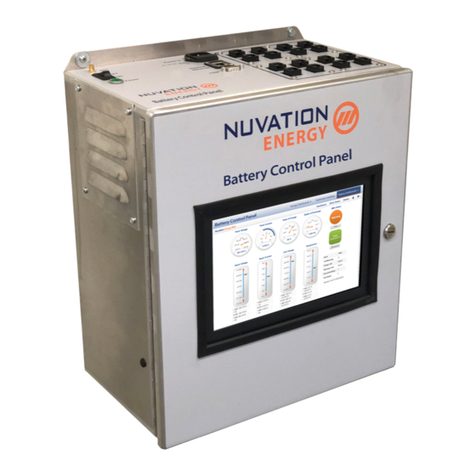
Nuvation Energy
Nuvation Energy BMS NUVBCP-4S product manual
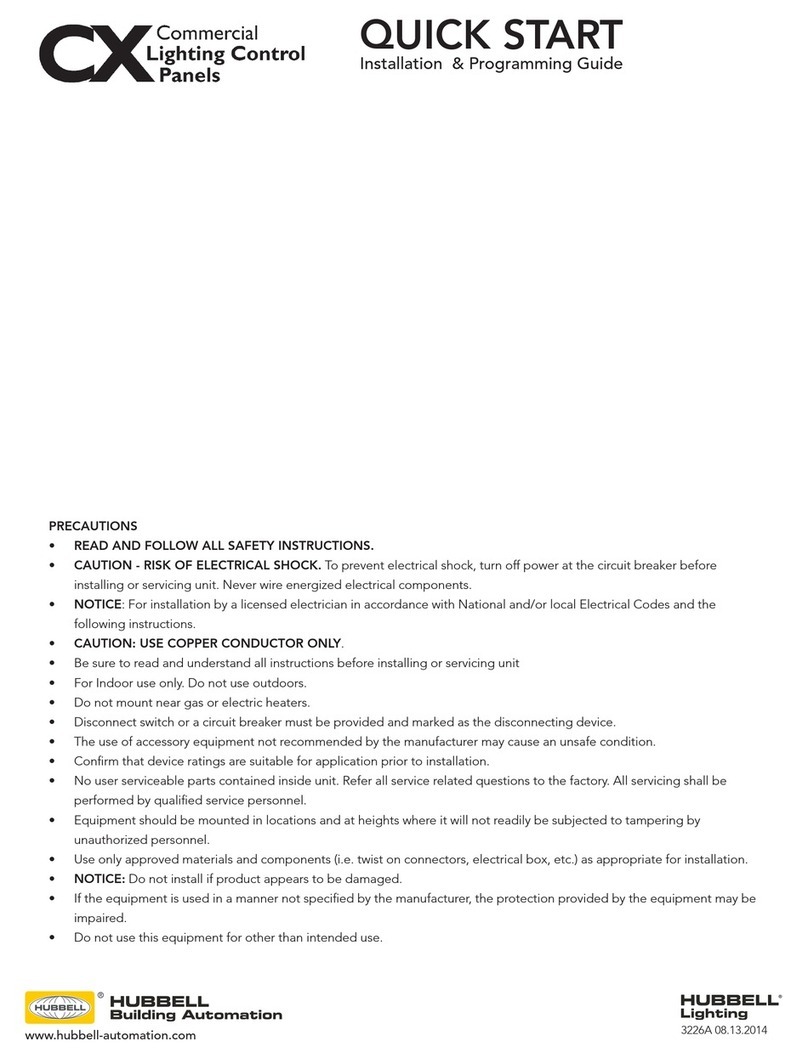
HUBBELL LIGHTING
HUBBELL LIGHTING CX quick start

Velux
Velux INTEGRA KLR 200 user manual
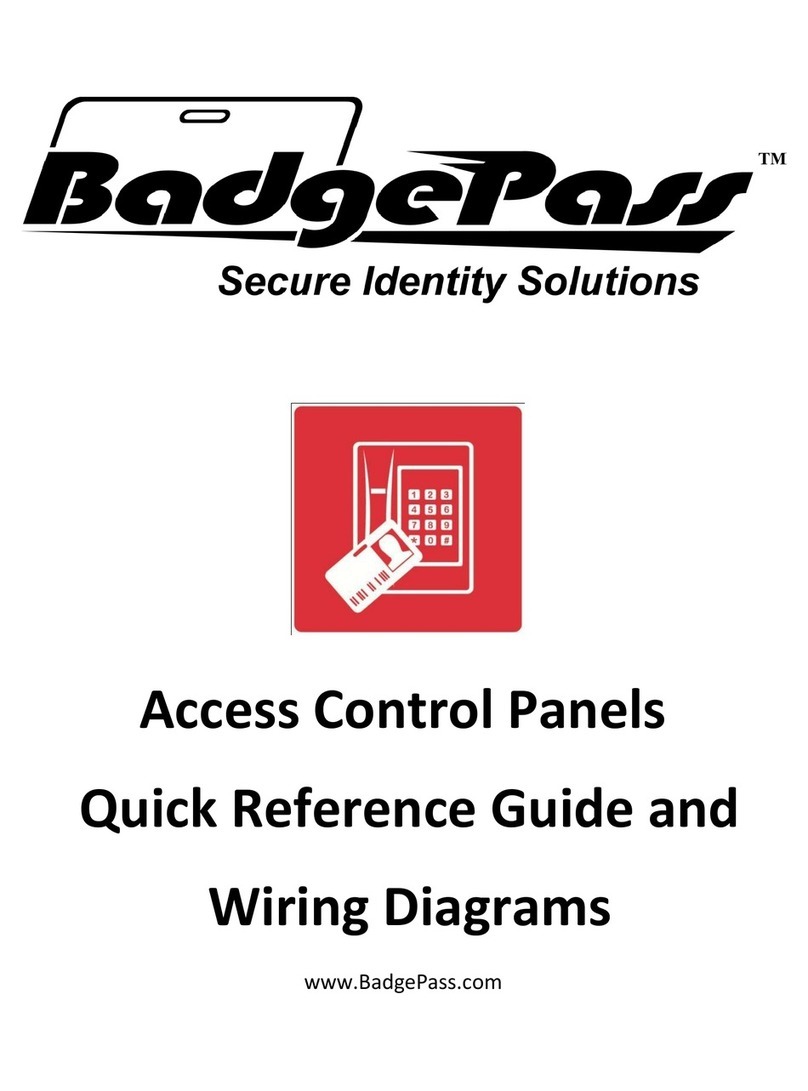
BadgePass
BadgePass BP 1501 Quick reference guide
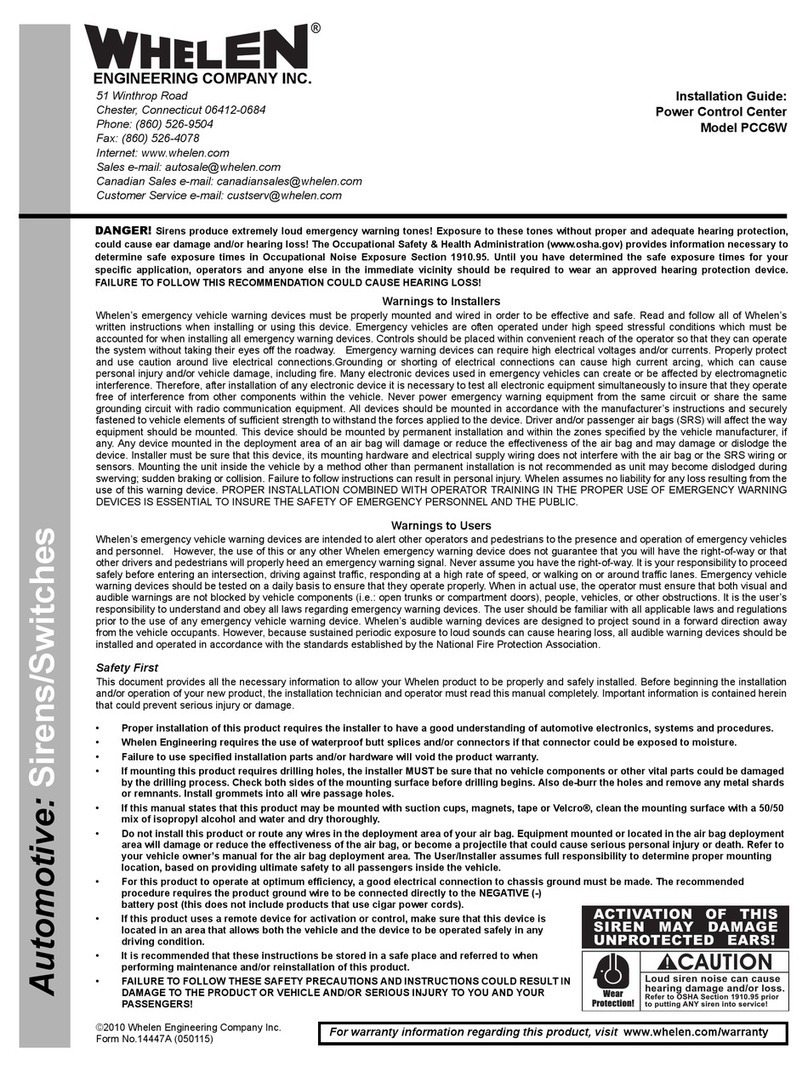
Whelen Engineering Company
Whelen Engineering Company PCC6W installation guide
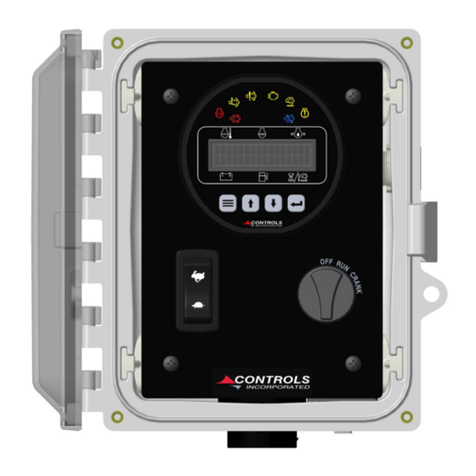
Controls
Controls MVP-62350 product manual

Kuhnke
Kuhnke Ventura Vico 1000 instruction manual
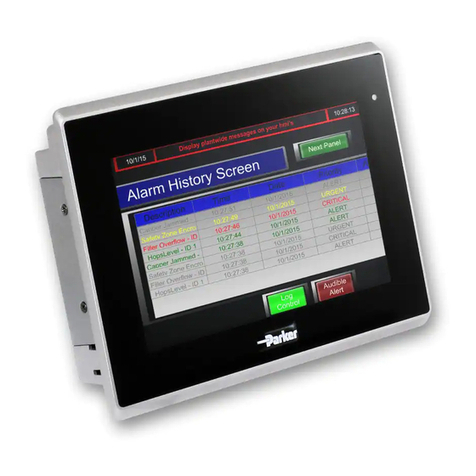
Parker
Parker PowerStation XT Series user manual
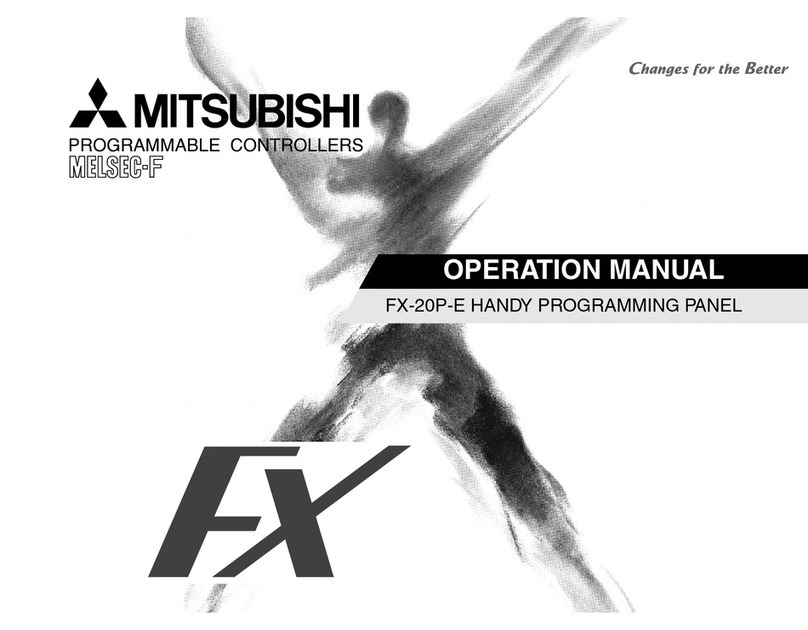
Mitsubishi
Mitsubishi FX-20P-E Operation manual
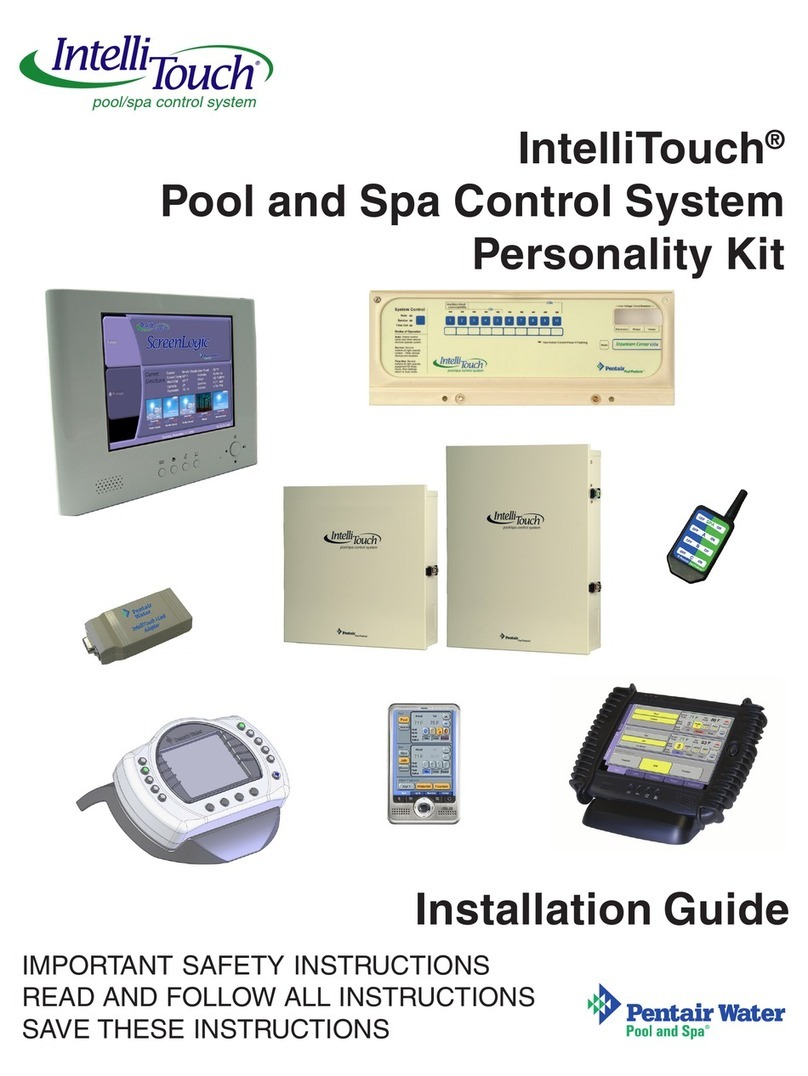
Intellitouch
Intellitouch Pool and Spa Control System installation guide
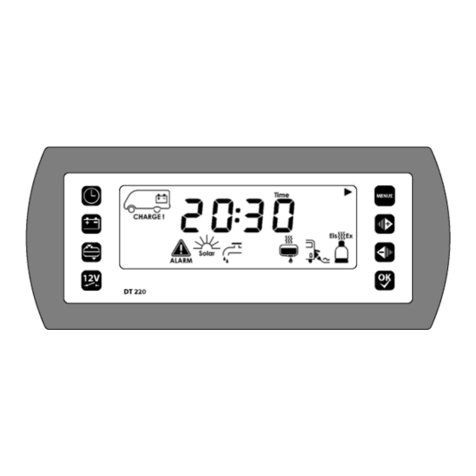
Schaudt
Schaudt DT 220 B instruction manual

Bosch
Bosch Solution 6+6 Wireless On/Off Quick reference guide

